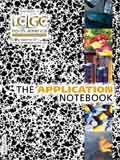Validation of Wisconsin Gasoline Range Organics
The Wisconsin Department of Natural Resources (DNR) Modified Gasoline Range Organics (Wisconsin GRO) Method is used to determine gasoline and gasoline components in water and soil. The optimal hydrocarbon range is from C6-C10 with a boiling point range from 60 ?C–220 ?C (1). The analysis of Wisconsin GRO is vital in determining the "composition and the origin of such products including weathered fuels leaking from underground storage tanks, spills in pipe lines and run-off from surface transportation" (2).
The Wisconsin Department of Natural Resources (DNR) Modified Gasoline Range Organics (Wisconsin GRO) Method is used to determine gasoline and gasoline components in water and soil. The optimal hydrocarbon range is from C6-C10 with a boiling point range from 60 °C–220 °C (1). The analysis of Wisconsin GRO is vital in determining the "composition and the origin of such products including weathered fuels leaking from underground storage tanks, spills in pipe lines and run-off from surface transportation" (2).
A linear calibration curve, lower limit of detection (LOD), lower limit quantitation (LOQ), and replicate laboratory control spikes (RLCS) and duplicate laboratory control spike (DLCS) were performed for water and high level soil matrices.
Experimental Conditions
This study utilizes the Atomx, a VOC sample prep system that integrates a Purge and Trap Concentrator with a Multi-Matrix Autosampler coupled to an Agilent 7890/5975 GC–MS for analysis. Tekmar's proprietary #9 trap was the analytical trap of choice. The GC was configured with a Restek RTX-VMS 20 m × 0.18 mm ID × 1 µm column. Water samples were analyzed using a 5 mL sample volume, while the soil analysis uses 7 g of soil, 7 mL of methanol and a 1:100 dilution for the automated methanol extraction process.
Results/Conclusions
Using Agilent Chemstation software, the summation of each standard from methyl-tert-butyl-ether to naphthalene were used to generate the calibration curve The area of the surrogate fluorobenzene was subtracted from the total summed area for the Wisconsin GRO calibration.The calibration pass method criteria with a correlation coefficient (r2 ) of 0.9992.
The Wisconsin GRO method requires for quality control (QC) checks to demonstrate the capabilty to generate acceptable accuracy and precision by running the following tests. For the water/soil, each matrix must run a RLCS, DLCS, LOD, and LOQ. Each of these tests must fall between required limits set forth in the Wisconsion GRO method. Results seen in Table I.

Table I: Replicate laboratory control spike (RLCS) and duplicate laboratory control spike (DLCS) results for water and soil. *n= 5 replicates
Figure 1 shows the chromatograms for the RLCS for a MeOH extraced soil.

Figure 1: TIC of 10 ppm RLCS methanol extraction chromatogram for Wisconsin GRO.
This study validates the use of the Atomx automated sample prep system in conjunction with an Agilent 7890/5975 GC–MS for the Wisconsin DNR Modified GRO Method. Calibration and QC data met all performance criteria of the method. Utilizing the methanol extraction feature for high level soil samples on the Atomx can save time and labor by automating the sample extraction process. The Atomx proved to be an excellent system to increase productivity in the lab.
References
(1) Modified GRO Method for Determine Gasoline Range Organics Wisconsin DNR September 1995 PUBL-SW-140.
(2) C. Chang and Z. Ji, "Optimized Analysis of Gasoline (BTEX) in Water and Soil Using GC/FID with Purge and Trap."
Teledyne Tekmar
4736 Socialville Foster Rd., Mason, OH 45040
tel. (800) 874-2004
Website: www.teledyne.com

Separation of Ultra-Short and Long Chain PFAS Compounds Using a Positive Charge Surface Column
December 11th 2024A separation of ultra-short and long chain PFAS (C1-C18) is performed on a HALO®PCS Phenyl-Hexyl column along with a HALO®PFAS Delay column which demonstrates excellent retention for both hydrophilic and hydrophobic analytes.

.png&w=3840&q=75)

.png&w=3840&q=75)



.png&w=3840&q=75)



.png&w=3840&q=75)














